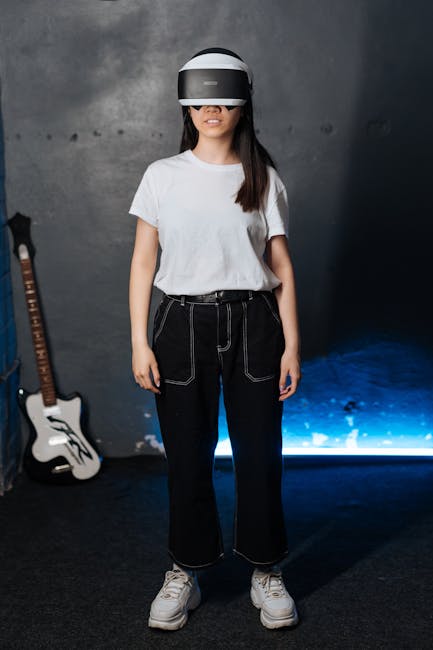How to Create a Virtual Reality Experience for the Arabic Alphabet
Diving into the world of virtual reality (VR) can be both exhilarating and daunting. When it comes to learning the Arabic alphabet, VR offers a unique and immersive way to familiarize oneself with these beautiful characters. Whether you’re an educator, a VR developer, or simply an enthusiast, creating a virtual reality experience for the Arabic alphabet can be both rewarding and fun. Let’s explore how you can bring this idea to life! 🎨✨
Table of Contents
1. Understanding the Basics of VR
2. Why Virtual Reality for the Arabic Alphabet?
3. Tools You’ll Need 🛠️
4. Designing the VR Experience
5. Testing and Feedback
6. Conclusion
7. FAQs
1. Understanding the Basics of VR
Before jumping into the creation process, it’s essential to understand what VR entails. Virtual reality is a simulated experience that can be similar to or completely different from the real world. It typically involves the use of VR headsets, which immerse users in a 3D environment. By leveraging VR, you can make learning the Arabic alphabet engaging and interactive.
2. Why Virtual Reality for the Arabic Alphabet?
Learning the Arabic alphabet can be challenging due to its unique script and pronunciation. By using VR, learners can interact with the alphabet in a multi-sensory way. Imagine being able to pick up letters, hear their sounds, and see them used in words—all within a captivating 3D environment. This method is especially useful for visual and kinesthetic learners. 🧠👀
3. Tools You’ll Need 🛠️
To get started, you’ll require some specific tools:
– **VR Headset:** Devices like Oculus Quest or HTC Vive are popular choices.
– **VR Development Software:** Unity or Unreal Engine are excellent platforms for creating VR experiences.
– **3D Modeling Software:** Tools like Blender can help you design the Arabic letters in 3D.
– **Audio Software:** Use programs like Audacity to record letter pronunciations.
4. Designing the VR Experience
Now comes the fun part—designing your VR experience! Here are some steps to guide you:
Start with a Storyboard 📖: Outline what you want users to experience. Will they walk through a virtual classroom? Or perhaps explore a magical forest where letters appear from behind trees?
Create 3D Letter Models: Use your 3D modeling software to design each Arabic letter. Ensure they are clear and visually appealing.
Integrate Audio: Pair each letter with its correct pronunciation. You can even include examples of words that start with each letter.
Interactive Elements: Allow users to interact with the letters. They could drag and drop them, or even combine them to form words.
5. Testing and Feedback
Once your VR experience is developed, it’s crucial to test it. Gather feedback from real users, especially those who are beginners in learning Arabic. Ask them about the ease of navigation, the clarity of the audio, and the overall engagement level. Use this feedback to make necessary adjustments.
6. Conclusion
Creating a virtual reality experience for the Arabic alphabet is an innovative way to enhance language learning. With the right tools and creativity, you can craft an immersive environment that captivates and educates. Remember, the key is to make it interactive and enjoyable, ensuring learners want to return to it again and again. Happy developing! 🎉
FAQs
Q1: Do I need programming skills to create a VR experience?
A: While basic programming knowledge can be helpful, many VR development platforms offer user-friendly interfaces that allow you to create without extensive coding experience.
Q2: How long does it take to create a VR experience?
A: This can vary depending on the complexity of your project. A simple VR experience might take a few weeks, while a more detailed one could take several months.
Q3: Can I use free tools to create my VR experience?
A: Yes, there are free tools available like Unity (with its personal license) and Blender for 3D modeling. These can be great starting points for beginners.
Q4: Is VR suitable for all ages?
A: While VR can be engaging for various age groups, it’s important to ensure that the content is age-appropriate and that users take breaks to avoid discomfort.






